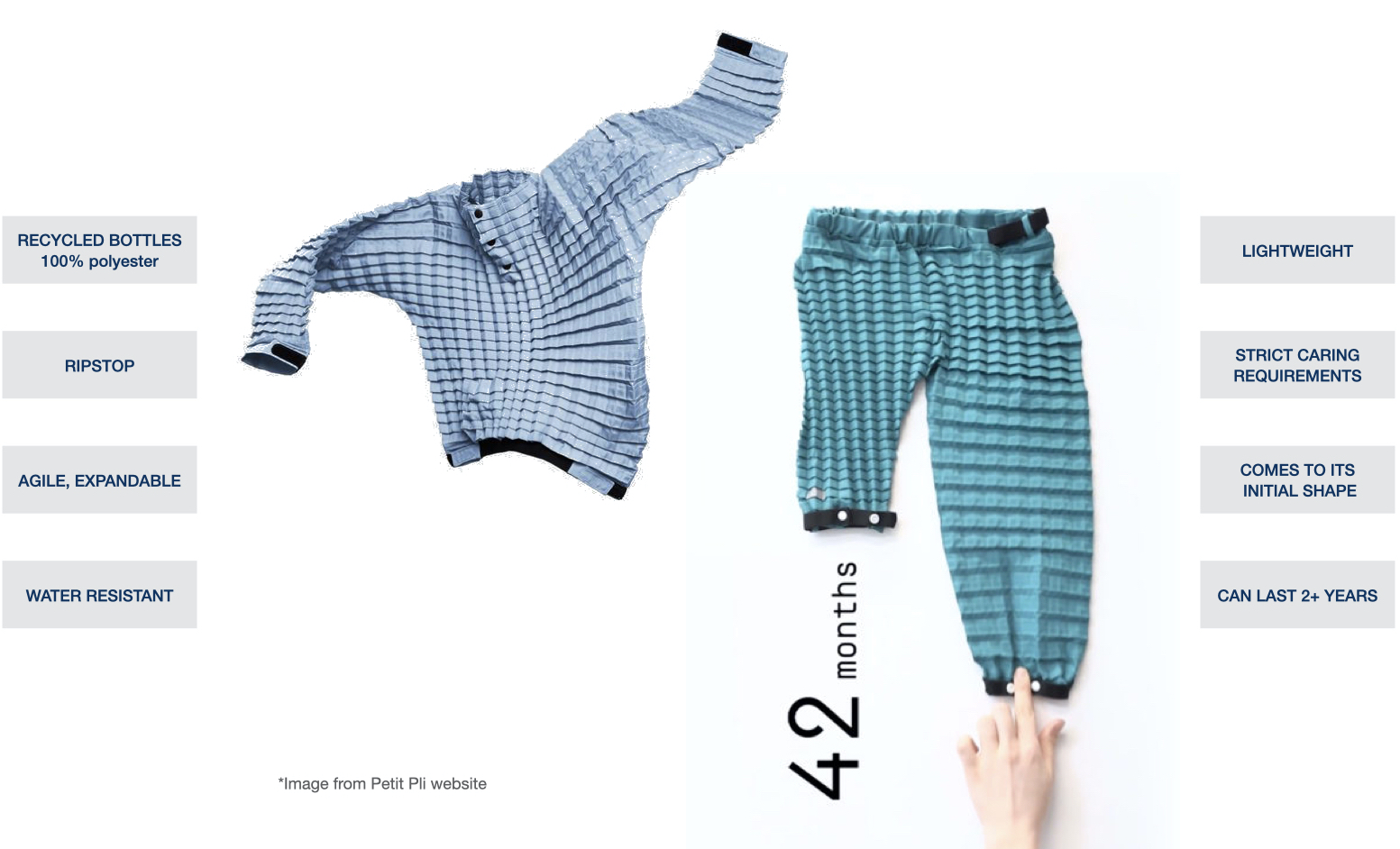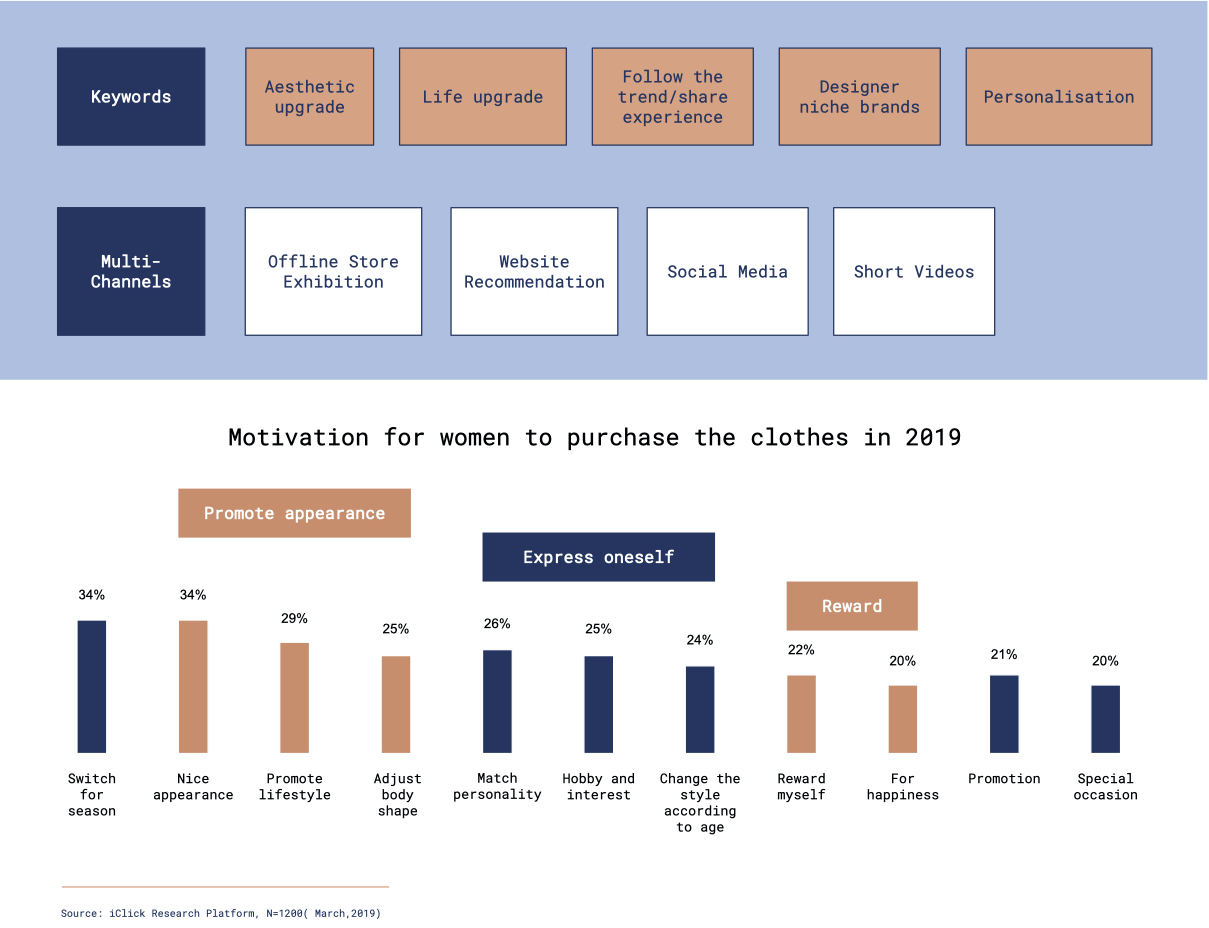Maman Pli
Pioneering the future of sustainable postpartum fashion

-
Maman Pli a reconfigurable garment with smart pattern cutting to allow flexibility and control, celebrating with women throughout their entire pregnancy journey.
-
This is a school collaborative project with Petit Pli, a material technology company specialising in sustainble fashion. The project brief given by the company is:
How could we increase the efficiency of adults in their daily lives by applying Petit Pli’s patented technology?
Prior to this collaboration, Petit Pli focused solely on childrenswear, hence the major task was to explore potential design opportunities for their future adultwear line.
This project successfully give valuable insights to Petit Pli's successful launch of their first adultwear line.
-
Maman Pli a reconfigurable garment with smart pattern cutting to allow flexibility and control, celebrating with women throughout their entire pregnancy journey.
-
This is a school collaborative project with Petit Pli, a material technology company specialising in sustainble fashion. The project brief given by the company is:
How could we increase the efficiency of adults in their daily lives by applying Petit Pli’s patented technology?
Prior to this collaboration, Petit Pli focused solely on childrenswear, hence the major task was to explore potential design opportunities for their future adultwear line.
This project successfully give valuable insights to Petit Pli's successful launch of their first adultwear line.
-
Project Info
Group Project
4 Weeks, 2021
Responsibilities
User Research, Workshops
Concept Exploration, Prototyping
Usability Testing, Visuals, Branding
Topics
Sustainable fashion
Maternity wear
Postpartnum
Design Methods
Co-design
Sustainable Design
Human-centered Design
Software
Adobe Photoshop, Adobe Illustrator
Visit lliuziyi.com on your laptop to check for the research process and full details
Exploring the brand.
Our brief challenged us to think about increasing the efficiency of adults in their daily lives using Petit Pli’s technology. Before choosing a specific direction, we did a comprehensive research around the brand itself.
I. Who is Petit Pli?
Petit Pli is a London-based company that revolutionised sustainable childrenwear using their innovative smart fabric technology. Their sustainable fabric uses clever geometry to allow it to expand and contract, enabling their garments to grow with the child.

II. Their market?
Next, we looked into some wider general market research. People are now in the age of aesthetic and life upgrades, willing to follow the trends and share their own experience.
A study from 2019 also showed that the top reasons motivating women to purchase new clothes are about self-expression and self-rewarding.
Next, we looked into some wider general market research. People are now in the age of aesthetic and life upgrades, willing to follow the trends and share their own experience.
A study from 2019 also showed that the top reasons motivating women to purchase new clothes are about self-expression and self-rewarding.

Market Research
III. Who are their potential customers?
To explore potential future customers for adultwear and the definition of ‘improving efficiency’, we chose 22 interviewees to gather insights in four directions: maternity wear, outdoor wear, sports wear, and seasonal wear.
The most relvant feedbacks are all from maternity wear participants, they are also existing customer of Petit Pli's, who are buying it for their children. Going through pregnancy, all the participants felt a sudden mental and physical change, also part of a new community. They are all adopters of sustainable practices in daily life, but when it comes to fashion, it is very hard for them to find sustainable choices due to the lack of maternity diversity.
To explore potential future customers for adultwear and the definition of ‘improving efficiency’, we chose 22 interviewees to gather insights in four directions: maternity wear, outdoor wear, sports wear, and seasonal wear.
The most relvant feedbacks are all from maternity wear participants, they are also existing customer of Petit Pli's, who are buying it for their children. Going through pregnancy, all the participants felt a sudden mental and physical change, also part of a new community. They are all adopters of sustainable practices in daily life, but when it comes to fashion, it is very hard for them to find sustainable choices due to the lack of maternity diversity.


Interview with Users
Focused Direction.
Therefore, we decided on focus on maternity wear, and more specifically postpartum to implement their smart fabric to whom might benefit from this.
_
How might we use Petit Pli’s technology to help women transition through their pregnancy into postpartum?
On the whole, there are some very large misconceptions about the pregnancy journey a woman experiences, from before, during, to after the birth of their baby. This causes a huge amount of societal pressure and mental health issues for new mums. Although pregnancy can be divided into distinct stages, it is important for us to treat the whole process as a collective journey.

Design Opportunities & Concepts.
To find out th painpoints and the opportunites, We conducted several 1-to-1 interviews with 8 women, including pregnant women, new mums and health professionals in the field to gather valuable insights about the strifes of their journey.

- We came across 3 design opportunities and proposed design concepts -
01_ We found that we need to design for the entire journey, not just a specific part. Mum's described maternity as a mental sacrifice, wanting to show baby bump during pregnancy but avoid it after birth.
We settled on modular and transformative wear as a good solution to this, giving women options and autonomy of their looks in the postpartum stage.
We settled on modular and transformative wear as a good solution to this, giving women options and autonomy of their looks in the postpartum stage.
.
.![Design Opportunity 1 & Concept 1]()
.

02_We looked at creating a safe environment for women to breastfeed. There were complaints about breastfeeding leakages and how it often ruined all clothes, discouraging mums to go outdoors.
We proposed a multi-purpose garment which could be used as a top but also protecting the mother to avoid her any embarrassment when breastfeeding.![Design Opportunity 2 & Concept 2]()
We proposed a multi-purpose garment which could be used as a top but also protecting the mother to avoid her any embarrassment when breastfeeding.
.
.
.

03_We focused on activewear for reducing mental burdens of postpartum.Some mums indicated that staying active helped their mental state, so we brainstormed ways for them to go indoor and outdoor while being close to baby.
It would help them prioritize self-care while sharing the time with their partner. With the genderless statement, dads can also take part easily.![Design Opportunity 3 & Concept 3]()
It would help them prioritize self-care while sharing the time with their partner. With the genderless statement, dads can also take part easily.
.
.
.

_
We started firstly by asking the mum's to yay or nay some existing postpartum solutions.
The main insight from this exercise was they wanted to be stylish regardless of the journey they went through!
User Validation - Co-deisgn workshop.
To validate the three concepts above, we conducted a co-design workshop with 4 mothers.

01_Ice Breaking Session
_
Next, the mothers mapped their user journeys during and after pregnancy. The emotions during pregnancy on the whole were more positive, whereas postpartum, the women had more mixed emotions, a lot of which were negative.
Next, the mothers mapped their user journeys during and after pregnancy. The emotions during pregnancy on the whole were more positive, whereas postpartum, the women had more mixed emotions, a lot of which were negative.

02_ User Journey throughout Pregnancy
_
For the final round, we did a usability test for all three ofconcepts. The mother liked the versatility and options of Concept 1, but had concerns as Concept 2 could remind the mothers of their "good mum" obligations and become mentally stressful. There is also safety issues with Concept 3.
We carefully considered all feedback, and decided to go forward with Concept 1, which involves modular clothing.
![03_ Usability Testing]()
For the final round, we did a usability test for all three ofconcepts. The mother liked the versatility and options of Concept 1, but had concerns as Concept 2 could remind the mothers of their "good mum" obligations and become mentally stressful. There is also safety issues with Concept 3.
We carefully considered all feedback, and decided to go forward with Concept 1, which involves modular clothing.

03_ Usability Testing
Prototyping.
We prototyped on a 1:1 scale, using clever pattern cutting and origami to model our design.

Final Design.
In our final design, our goal was to create garments that are both comfortable and stylish for women to wear throughout their entire pregnancy journey. To achieve this, we developed a reconfigurable garment that utilises smart pattern cutting to provide flexibility and control. This design celebrates the features women want to highlight while concealing those they don't. It also offers various styling options to suit personal preferences.

We learnt that women want to be fashionable. Woman want to be empowered.
They don't want to have to choose between being a responsible mother in the eyes of society and being fashionable in their own right.
They don't want to have to choose between being a responsible mother in the eyes of society and being fashionable in their own right.

Features of Maman Pli
After Story.
The project deployed a Human-Centered Design methods, we were able to gain valuable insights into the needs of potential users through multiple rounds of user research and co-design workshop. These insights was impactful in helping the company find ways to enter into the adultwear market and successfully launch their first adultwear line (︎︎︎check the post) .